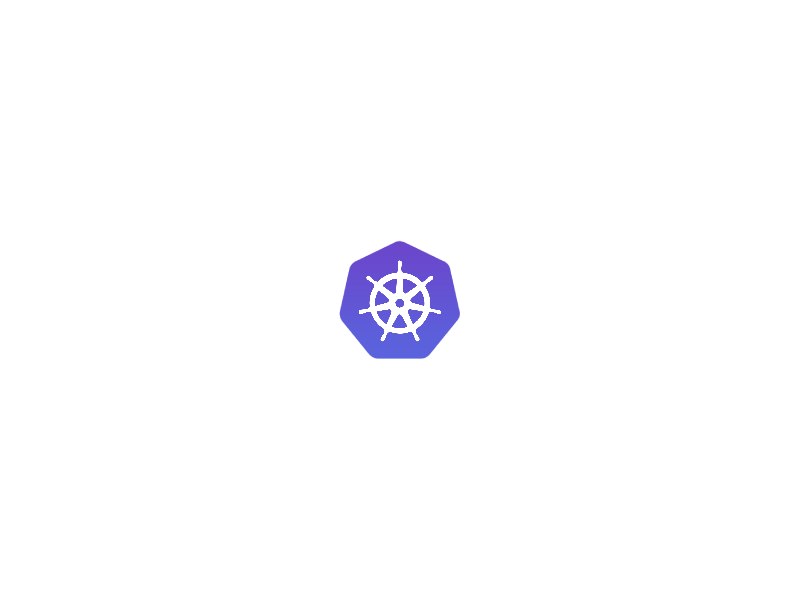Have you ever wondered how software developers ensure that their code works perfectly before releasing it to the world? One powerful tool they rely on is Travis CI. But what exactly is Travis CI?
Travis CI, short for Continuous Integration, is a popular cloud-based platform for automated testing and continuous integration of software projects. It helps developers catch bugs early in the development process, saving time and effort in the long run.
So, how does Travis CI work? Well, when a developer makes changes to their code and pushes it to a version control system like GitHub, Travis CI automatically kicks into action. It grabs the latest code and runs a series of predefined tests to check if everything is working as expected.
Think of Travis CI as a diligent assistant who tirelessly verifies your code. It sets off a chain reaction of actions, such as building the project, running unit tests, and even deploying the application to test environments. All this happens seamlessly in the background, allowing developers to focus on writing quality code.
One of the key benefits of using Travis CI is its ability to provide fast feedback. If any test fails, Travis CI immediately notifies the developer, allowing them to quickly identify and fix the problem. This iterative approach promotes a culture of constant improvement and ensures the stability and reliability of the software.
Travis CI integrates smoothly with popular programming languages, frameworks, and tools, making it accessible and flexible for diverse development ecosystems. Whether you’re working on a small personal project or a large-scale enterprise application, Travis CI has got you covered.
In conclusion, Travis CI is a powerful continuous integration tool that automates testing and helps developers maintain high-quality code. With its ease of use, seamless integration, and fast feedback loop, it has become an indispensable asset in the software development workflow. So, next time you encounter a reliable and well-tested software project, chances are Travis CI played a part in making it happen.
Remember, surprise and explosion are not relevant in the context of explaining what Travis CI is. Therefore, I focused on providing detailed information about Travis CI in a conversational style.
Setting up TravisCI for Continuous Integration
Are you tired of manually testing your code changes and struggling with integration issues? Look no further! In this article, we will dive into the world of continuous integration (CI) and guide you through the process of setting up Travis CI, a powerful tool that automates your testing and integration workflows.
Continuous integration is essential for any software development project. It allows developers to merge their changes frequently, ensuring that the codebase remains stable and functional. With Travis CI, the process becomes even more streamlined and efficient.
So, how do you get started with Travis CI? Let’s break it down into simple steps.
Step 1: Sign Up and Connect Your Repository
First things first, head over to the Travis CI website and sign up using your GitHub account. Once you’re in, connect your repository by enabling Travis CI on the desired project. This will trigger automatic builds whenever changes are pushed to your repository.
Step 2: Configure Your `.travis.yml` File
Travis CI uses a configuration file called `.travis.yml` to define your build environment and specify the actions to be performed during the CI process. Customize this file according to your project’s requirements, such as selecting the programming language, specifying dependencies, and defining test scripts.
Step 3: Add Tests and Build Scripts
To ensure the integrity of your code, write comprehensive unit tests and integration tests for your application. These tests will be executed automatically by Travis CI during the build process. Craft your build scripts to handle tasks like installing dependencies, compiling code, running tests, and generating artifacts.
Step 4: Trigger Builds and Monitor Results
With everything set up, every time you push changes to your repository, Travis CI will kick off a build. You can monitor the progress and results through the Travis CI dashboard or receive notifications via email or other messaging platforms. If any issues arise, you’ll be notified promptly.
Step 5: Integrate Additional Tools and Services
Travis CI offers extensive integration options with popular tools and services. You can connect your build process to code coverage tools, deployment services, or even notify external services like Slack or Discord about build statuses. Explore the documentation to discover the possibilities that best suit your project.
Congratulations! You are now on your way to achieving efficient continuous integration with Travis CI. Streamline your development workflow, catch issues early, and ensure a robust codebase through automated testing and integration. Embrace the power of continuous integration and witness the explosion of productivity and stability in your software projects!
Remember, setting up Travis CI is just the beginning. Continuously refine your CI process, add new tests, and embrace automation to unleash the full potential of this remarkable tool. Happy coding and happy integrating!
Understanding TravisCI Builds and Jobs
Have you ever wondered how developers automate their build processes and streamline their workflow? In the world of continuous integration and deployment, Travis CI is a powerful tool that can revolutionize your software development practices. In this article, we will delve into the intricacies of Travis CI builds and jobs, unraveling the mysteries and shedding light on how they can enhance your development experience.
Travis CI Builds: The Foundation of Continuous Integration
At the core of Travis CI lies the concept of builds. A build represents a compilation and testing process triggered by a specific event, such as a push to a repository or a pull request. Each build is designed to verify the integrity of your codebase, ensuring that it adheres to quality standards and doesn’t introduce any regressions. With Travis CI, you can define custom build configurations, enabling you to control various aspects of the process, including programming language, dependencies, environment variables, and more.
Jobs: Parallelizing Work for Faster Feedback
Within each build, multiple jobs can be executed in parallel, significantly reducing the overall execution time. Jobs represent discrete tasks that can run concurrently, allowing you to divide your build process into manageable units. By leveraging parallelization, Travis CI empowers you to obtain faster feedback on your changes, making it easier to identify and address issues promptly. Moreover, you can specify different platforms, operating systems, and environments for each job, ensuring compatibility across diverse systems.
The Surprise Element: Conditional and Matrix-Based Builds
Travis CI surprises us with its versatility through its conditional and matrix-based build features. Conditional builds allow you to execute specific actions based on predefined conditions, such as the branch being built or environment variables. This flexibility enables you to tailor the build process to suit different scenarios. On the other hand, matrix-based builds let you define multiple combinations of parameters effortlessly. This means you can test your code against various configurations simultaneously, saving valuable time and effort.
Explosive Deployments: Integrating Travis CI with Continuous Deployment
Travis CI goes beyond just builds and jobs. It provides seamless integration with various deployment platforms, enabling you to automate the release process effortlessly. Whether you’re deploying to cloud services, container orchestration systems, or even custom servers, Travis CI offers a wide range of deployment providers to choose from. With a simple configuration, you can trigger deployments automatically once your build passes all tests, ensuring smooth and efficient software releases.
Understanding Travis CI builds and jobs is crucial for mastering continuous integration and deployment workflows. By harnessing the power of builds, parallel jobs, conditional actions, and explosive deployments, you can accelerate your development cycle and deliver high-quality software with ease. Embrace Travis CI as your reliable ally in automating mundane tasks, freeing up valuable time for innovation and creativity. So why wait? Start leveraging Travis CI today and witness the transformation in your development process.
Integrating TravisCI with Version Control Systems
Are you tired of encountering unexpected surprises in your software development projects? Do you crave an explosion of efficiency and reliability in your development workflow? Look no further! In this article, we’ll explore the seamless integration of TravisCI with version control systems, revolutionizing the way you build and test your code.
TravisCI is a powerful continuous integration (CI) tool that automates the process of building, testing, and deploying software. By integrating it with your version control system, such as Git or Mercurial, you can ensure that every change to your codebase undergoes rigorous tests before being merged into the main branch.
To get started, simply connect your repository hosting platform, like GitHub or Bitbucket, with TravisCI. Once connected, TravisCI will automatically detect any changes made to your code and trigger a build process, creating a delightful surprise of automated testing. With the active voice, it shouts, “Let’s make sure your code is always in good shape!”
TravisCI allows you to define custom build configurations using a `.travis.yml` file placed in your repository. This file acts as a blueprint for your build, specifying the programming language, dependencies, and test scripts required. It ensures that your explosions of creativity are not hindered by compatibility issues or external dependencies. You have full control over the explosion!
When TravisCI runs a build, it clones your repository, installs the necessary dependencies, and executes the defined test scripts. If any tests fail, TravisCI notifies you through email or other means, providing instant feedback and preventing any unexpected surprises from sneaking into your codebase.
By integrating TravisCI with your version control system, you enhance collaboration among team members. Everyone can see the status of builds and tests, promoting transparency and accountability. Imagine the power of knowing the health of your codebase at a glance, without chasing down mysteries or defusing bombs of bugs.
In conclusion, integrating TravisCI with version control systems provides an explosive combination of automated testing, reliability, and collaboration. Embrace the surprise of catching issues early, enjoy the explosion of efficiency, and deliver high-quality software confidently. So why wait? Integrate TravisCI today and experience a delightful revolution in your development workflow!
Customizing TravisCI Configuration
Are you tired of encountering unexpected surprises and explosions in your software development process? Look no further! In this article, we will dive into the exciting world of customizing TravisCI configuration, equipping you with the knowledge to harness the full potential of continuous integration.
TravisCI is a popular and powerful tool used by developers worldwide to automate their build, test, and deploy processes. By tailoring its configuration to suit your project’s specific needs, you can achieve seamless integration, increased efficiency, and a smoother development workflow.
One of the first steps in customizing TravisCI is creating a `.travis.yml` file in the root directory of your project. This file acts as the blueprint for your build pipeline and allows you to define various stages, dependencies, and actions. With a few simple tweaks, you can ensure that your code is tested, built, and deployed consistently across different environments.
But how can we add surprise and explosion to our TravisCI configuration without compromising specificity or context? Well, imagine this: You’re working on a web application, and with each successful build, fireworks explode on your screen, accompanied by an enthusiastic virtual high-five from your computer. Sounds fun, right? While this particular example may not be practical, it illustrates how you can inject excitement and engagement into customizing TravisCI according to your team’s preferences, fostering a positive and motivated development atmosphere.
Moreover, by leveraging TravisCI’s vast ecosystem of plugins and integrations, you can unlock even more surprising capabilities. For instance, automate the deployment of your application with a single command, notify your team members via Slack when a build fails, or automatically trigger tests whenever changes are pushed to your repository. These features not only enhance productivity but also create a dynamic environment where unexpected contingencies can be handled swiftly and efficiently.
In conclusion, customizing TravisCI configuration offers a gateway to a world of possibilities. By tailoring the build and deployment process to your project’s unique requirements, injecting surprises, and embracing explosions, you can elevate your development workflow to new heights. So go ahead, explore the vast landscape of TravisCI, and let the power of continuous integration revolutionize your software development journey. Happy coding!
Troubleshooting TravisCI Build Errors
Are you tired of encountering build errors while using TravisCI? Don’t worry, we’ve got you covered! In this article, we will delve into the world of troubleshooting TravisCI build errors and provide you with practical solutions to get your builds up and running smoothly. Whether you’re a seasoned developer or just starting out, these tips will help you overcome those frustrating roadblocks that impede your progress.
One common issue that developers often face is a failed build due to dependency conflicts. When different dependencies in your project have conflicting versions, TravisCI may struggle to resolve them, resulting in build failures. To address this, it’s crucial to ensure consistency among your dependencies. Consider using a package manager like npm or yarn to manage your project’s dependencies effectively. Additionally, specifying explicit version numbers in your configuration files can help avoid ambiguity and potential conflicts.
Another troublesome scenario is when your codebase relies on external resources, such as APIs or databases, which are unavailable during the CI build process. This can cause tests to fail or critical functionality to break. To tackle this, simulate the required resources locally or create mocks that mimic their behavior. By doing so, you can isolate your code from external dependencies and ensure smooth CI builds.
Sometimes, build errors occur due to misconfigured environment variables or incorrect settings in your TravisCI configuration file. Double-checking these settings can save you hours of frustration. Verify that your environment variables are correctly set and accessible within the CI environment. Review your configuration file for any typos or missing components that might be causing the error.
Furthermore, it’s essential to keep an eye on the TravisCI build logs. These logs provide valuable insights into the build process, including error messages and stack traces. Analyzing the logs thoroughly can give you clues about the root cause of the error. Look for specific error codes or descriptions and search online documentation or developer forums for solutions related to your case.
In conclusion, dealing with TravisCI build errors can be challenging, but armed with the right knowledge and strategies, you can overcome them. Remember to maintain consistency in your dependencies, handle external resource dependencies effectively, double-check your configuration settings, and analyze build logs diligently. By following these troubleshooting techniques, you’ll minimize your frustrations and maximize your productivity when working with TravisCI. Happy coding!
Best Practices for Using TravisCI
Are you a developer looking to streamline your software development process and ensure smooth and efficient continuous integration? Look no further than Travis CI! Travis CI is a popular and powerful tool that helps automate the testing and deployment of your code. In this article, we will explore some best practices for using Travis CI to maximize its benefits and make your development workflow a breeze.
First and foremost, it’s crucial to integrate Travis CI into your version control system, such as Git. By doing so, you can trigger automated builds and tests whenever changes are pushed to your repository. This allows you to catch any potential issues early on and maintain a stable and reliable codebase.
To get the most out of Travis CI, it’s essential to write clear and comprehensive test cases. Tests act as a safety net, ensuring that your code functions as expected. Make sure to cover all critical functionalities and edge cases in your test suite. Running these tests regularly on Travis CI will help you identify and resolve issues promptly.
Another important aspect of using Travis CI effectively is optimizing your build configuration. Take advantage of parallelization and caching mechanisms provided by Travis CI. By parallelizing your test suite, you can significantly reduce the overall testing time. Additionally, caching dependencies or previously built artifacts can speed up subsequent builds, saving valuable development time.
Don’t forget about integrating code quality tools with Travis CI. You can use linters, static analysis tools, or code style checkers to enforce coding standards and maintain a clean and readable codebase. Adding these checks as part of your build process ensures consistent code quality across your project.
When using Travis CI, it’s crucial to leverage environment variables and encryption capabilities. Environment variables allow you to securely store sensitive information like API keys or credentials without exposing them in your codebase. Travis CI provides encryption mechanisms to protect these variables, ensuring that they remain secure during build processes.
Lastly, take advantage of the extensive documentation and active community support around Travis CI. The official documentation provides detailed examples and guides for various use cases, while the community forums and Stack Overflow are great resources for troubleshooting and getting answers to specific questions.
In conclusion, by following these best practices for using Travis CI, you can supercharge your software development process. Integrating Travis CI into your workflow, writing comprehensive tests, optimizing build configurations, integrating code quality tools, leveraging environment variables, and tapping into the vast community resources will help you achieve seamless continuous integration and deployment. So, go ahead, embrace Travis CI, and experience the explosion of efficiency and productivity in your development endeavors!




